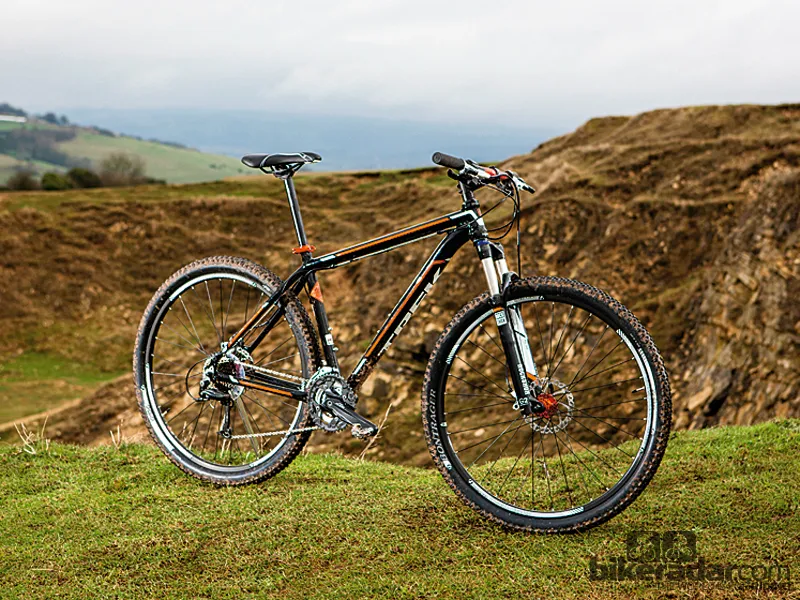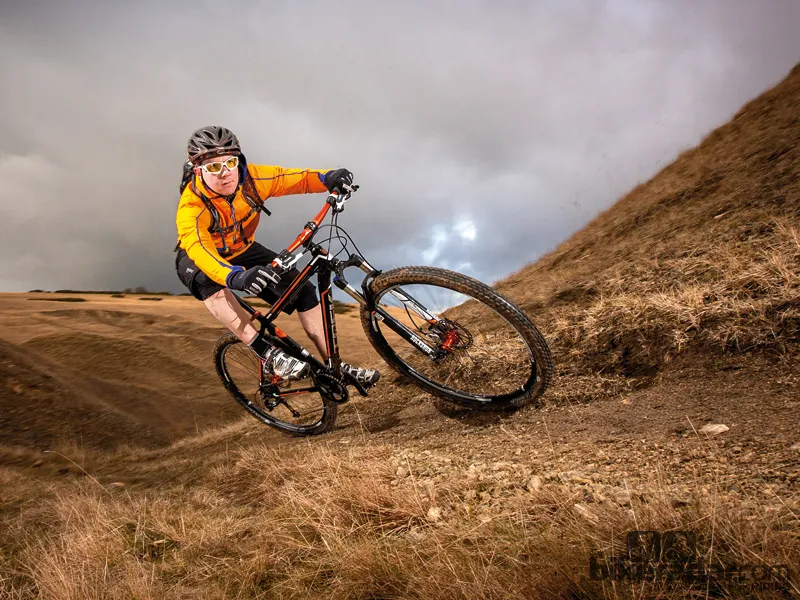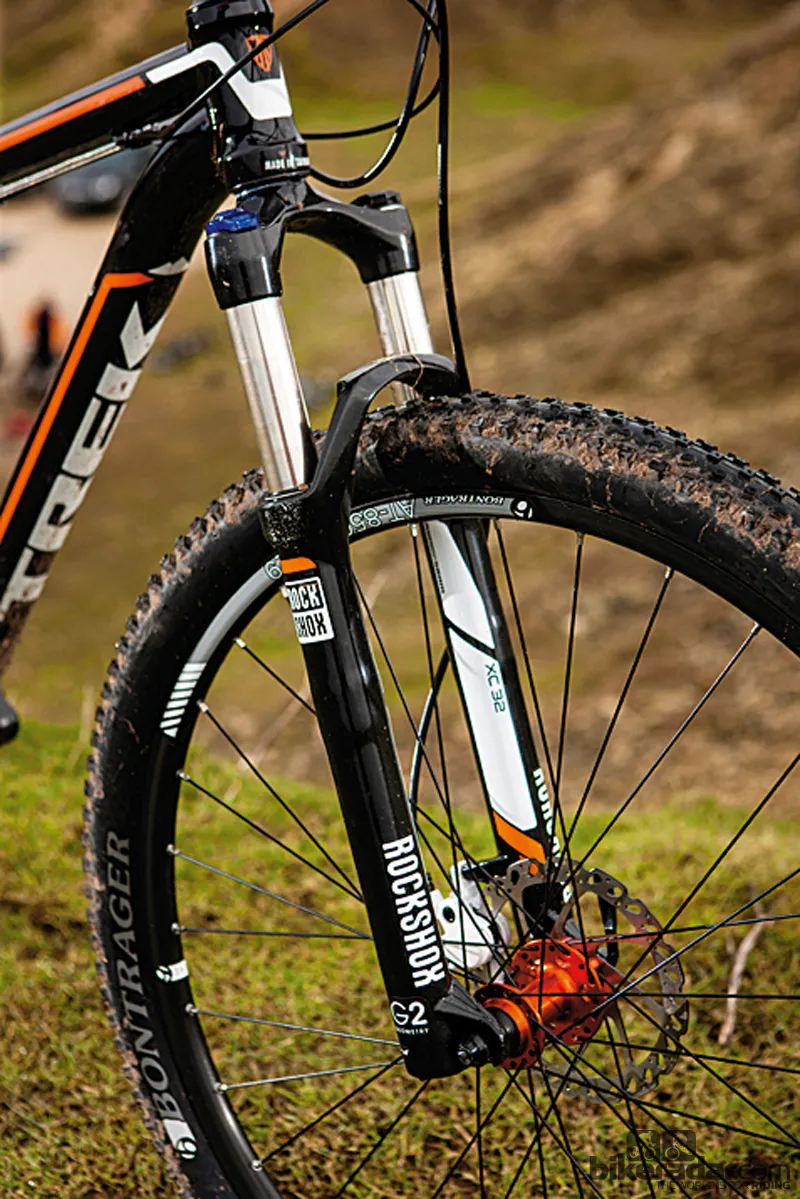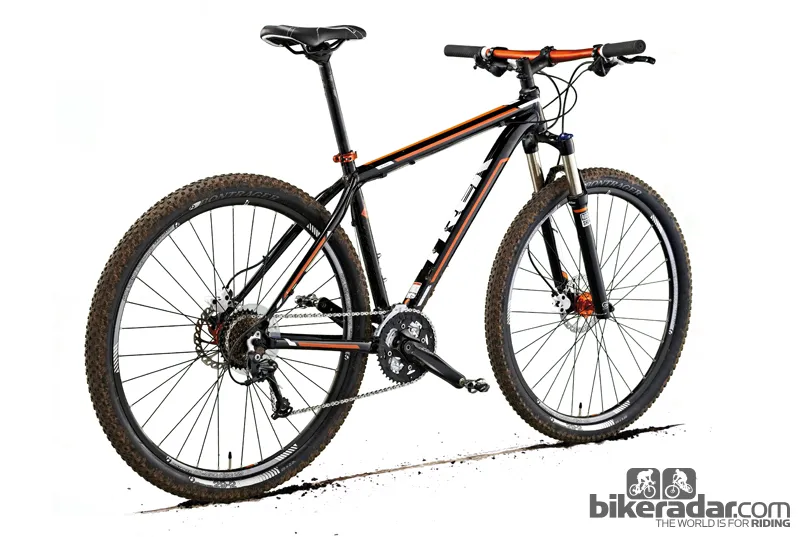The Mamba’s frame and fork are decent offerings on a £700/US$1,000 bike, so we can excuse the fact the that drivetrain is downmarket compared to a lot of its price rivals. So the big issue here is whether Trek’s considerable 29er design expertise can overcome those parts compromises.
Ride & handling: Fun and easy on difficult trails
We’d say the Trek is relatively easy to ride, either fast or slow. It responds superbly to every little nuance of rider input, never feels like a 14kg (31lb) bike on the climbs and tames bumpy terrain more effectively than a 26in-wheeled bike with a 120mm travel fork.
The rounded carcass, spacy knob profile and soft compound of the Bontrager tyres mean they grip very well in almost all trail conditions. This adds considerably to the feeling of confidence the bike exudes. But the fact remains that’s it’s not as well equipped in the drivetrain area as a lot of other £700/US$1,000 bikes.
Frame & equipment: Excellent design and spec
This is one of Trek’s Gary Fisher Collection bikes, and the extra cash you might fork out for the RockShox XC32 fork is money well spent. The relatively fat stanchions make for better tracking and less fluttery responses than with cheaper suspension options. You also get a decent lockout, an effective preload dial and rebound damping adjustment.
Fisher’s G2 geometry specifies a custom fork crown that increases fork offset and reduces trail; this conspires to produce a ride that has the inherent stability of a 29er, yet the more lively low-speed steering of a 26er.

The Mamba frame is nicely constructed. A squat reinforced head tube and curvy down tube avoids the lanky front end that often afflicts 29ers, but the washer stack on the steerer allows more than an inch of up/down adjustment – more if you flip the stem. The Bontrager handlebar is almost flat, but the comfy backsweep is kind on the wrists and the 27.5in width seems to suit most riders.
The frame offers generous standover clearance and two sets of bottle bosses. The Hayes Dyno Sport brakes are powerful enough but not as nicely modulated as some others, and the pads need heating up on a long descent to bed in before you can rely on their stopping power.
The Deore/Acera/Alivio mix 3x9 drivetrain is downmarket compared to many price rivals, but function is still excellent. The wheels are average: Bontrager AT-850 rims and Formula hubs shod with fast but grippy 2.2in Bontrager treads.
We were disappointed with the Trek’s brakes, but the downmarket drivetrain still works well and the frame and fork will certainly bear the cost of eventual drivetrain upgrades.
This article was originally published in What Mountain Bike magazine, available on Apple Newsstand and Zinio.



